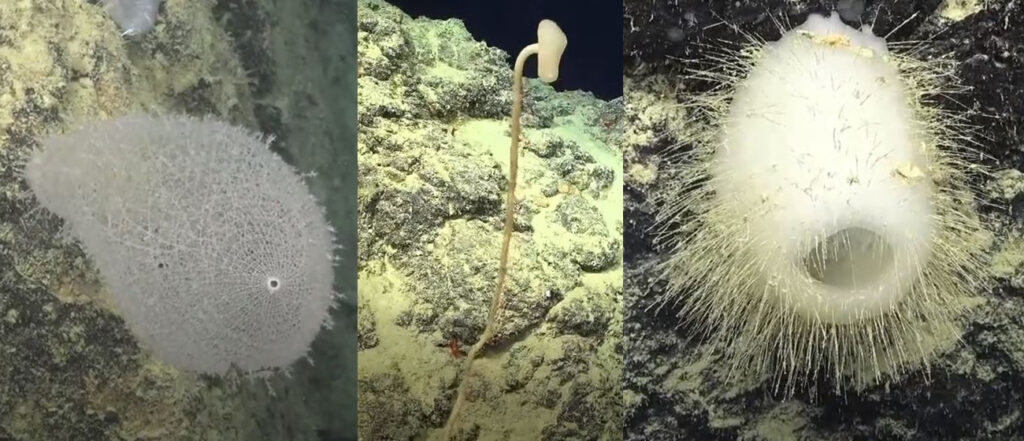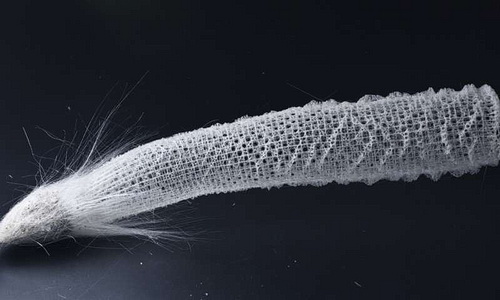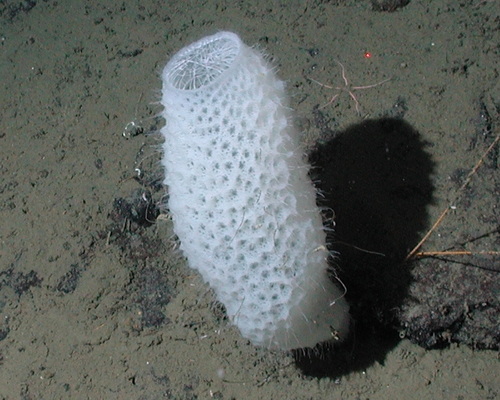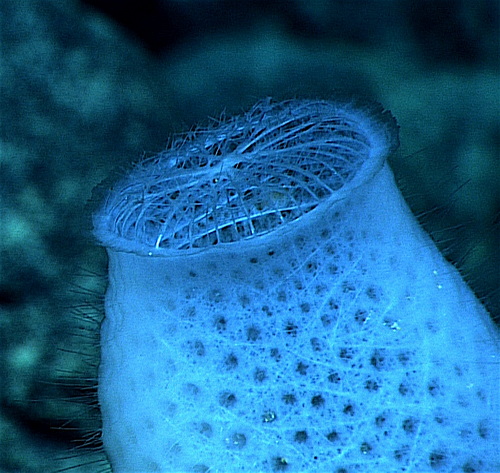Physical Address
304 North Cardinal St.
Dorchester Center, MA 02124

In the depths of the ocean lie some of the most ancient and fascinating organisms on Earth: glass sponges. These unique sponges, which belong to the class Hexactinellida, are often referred to as “living fossils” because they have existed for hundreds of millions of years, dating back to the Jurassic period. Their intricate silica-based skeletons, delicate appearance, and remarkable survival in extreme environments have made them a subject of fascination for scientists and marine enthusiasts alike. This article delves into the biology, ecology, and significance of glass sponges, shedding light on why they are considered both rare treasures and vital components of marine ecosystems.
Glass sponges are a group of sponges distinguished by their glass-like skeletons composed of silica, a mineral found in sand and quartz. Unlike most sponges, which have flexible, soft bodies, glass sponges have rigid structures formed by spicules, tiny needle-like skeletal elements made of silica. These spicules come together to create intricate lattice-like frameworks that can resemble delicate glass sculptures, hence the name “glass sponges.”

Glass sponges observed on ROV dive 399 (965 -1086 m depth).
There are roughly 500 known species of glass sponges, with the majority found in the deep sea, typically at depths below 200 meters (650 feet). Although their skeletons appear fragile, glass sponges are adapted to withstand the intense pressure and cold temperatures of the deep ocean.



‘Venus Flower Basket, Credit: Kesari Lab/Brown University, Closeup of the top of a Venus flower basket sponge (NOAA Library), Venus Flower Basket on the Davidson Seamount at a depth of 2572 meters. Credit: NOAA/Monterey Bay Aquarium Research Institute. Public domain.’
The glass sponge lineage is ancient, with fossils dating back over 500 million years, making them some of the oldest known multicellular organisms. Because of this, they are often called “living fossils,” as their morphology has changed little over millions of years. Studying glass sponges gives scientists valuable insights into early animal evolution and the adaptation mechanisms that have allowed these organisms to survive since the time when Earth’s oceans were vastly different from today.
Some glass sponge species from the Jurassic period even resemble those living in modern oceans, a testament to their evolutionary success. Unlike many other ancient species that have either gone extinct or adapted into new forms, glass sponges remain strikingly similar to their prehistoric counterparts, making them a vital link to Earth’s ancient past.
Living in the deep ocean requires unique adaptations to survive high pressures, low temperatures, and limited food availability. Glass sponges are suspension feeders, meaning they feed by filtering tiny organic particles and plankton from the water. Their bodies contain numerous tiny pores that draw water in, allowing them to capture food particles and expel waste. Unlike most sponges, which rely on a rapid pumping mechanism to circulate water through their bodies, glass sponges have a slower, more energy-efficient system adapted to the low-food environment of the deep sea.

One of the most unique adaptations of glass sponges is their ability to conduct electrical impulses. Unlike other sponges, glass sponges have specialized cells that allow them to transmit electrical signals, coordinating their feeding and response to changes in water flow. This allows them to regulate their filtration rate, making their feeding more efficient and adaptable to the sometimes unpredictable conditions of the deep ocean.
The skeletons of glass sponges are unlike anything else in the animal kingdom. Composed of silica, the skeletons are organized into intricate patterns that give the sponges a delicate, glass-like appearance. These skeletons are also incredibly strong and lightweight, allowing them to survive in areas of the ocean with strong currents and high pressure. Some glass sponge skeletons, such as those of the genus Euplectella, are so delicate and symmetrical that they have inspired engineers to study their structure for use in modern technology.
In certain glass sponge species, the skeleton can act as a living habitat for other organisms. For example, the Venus’s flower basket (Euplectella aspergillum) is a well-known glass sponge whose lattice-like structure provides shelter for tiny crustaceans. In some species, pairs of shrimp become trapped inside the skeleton during their larval stage and spend their entire lives within the sponge, forming a unique symbiotic relationship.
Glass sponges play an important ecological role, particularly in the deep waters of the North Pacific, where they form complex reef systems. These glass sponge reefs, first discovered off the coast of British Columbia, Canada, in the 1980s, are considered to be some of the last remnants of ancient reefs that once covered vast areas of the seafloor millions of years ago. These reefs support diverse marine life, including fish, crustaceans, and other invertebrates that depend on the sponges for food and shelter.
The structural complexity of glass sponge reefs creates a habitat for various organisms, forming a hotspot of biodiversity in otherwise barren seafloor regions. The reefs filter large volumes of seawater, helping to maintain water clarity and recycling nutrients within the ecosystem. These glass sponge reefs are a crucial part of the marine environment, but they are fragile and vulnerable to human impacts, such as bottom trawling and ocean acidification.
Though glass sponges may seem to lead a quiet life on the seafloor, they play an essential role in ocean ecosystems. As filter feeders, they help maintain water quality by removing bacteria and organic particles, essentially acting as a cleaning mechanism for the surrounding water. They also contribute to nutrient cycling, converting organic particles into a form usable by other organisms and supporting the food web in deep-sea habitats.
In addition to their ecological functions, glass sponges provide unique research opportunities. Their silica-based skeletons have led scientists to explore biomimicry in engineering and materials science, as their structures demonstrate impressive strength and resilience. By studying glass sponge skeletons, researchers have made strides in developing lightweight, strong materials for use in technology and construction.
Despite their isolation in the deep ocean, glass sponges face significant threats. Human activities such as deep-sea trawling, mining, and climate change pose risks to these delicate organisms. The skeletons of glass sponges are easily damaged by trawling nets, which can destroy vast sections of sponge reefs in a single sweep. Ocean acidification, driven by increased CO₂ levels, is another serious threat, as the acidity can weaken the silica in their skeletons, making them more vulnerable to damage.
Conservation efforts to protect glass sponge reefs have been implemented in regions like Canada, where glass sponge reefs are protected by marine conservation zones that restrict trawling and other harmful activities. However, further international cooperation and protection measures are needed to preserve these ancient organisms and their ecosystems.
Glass sponges are a remarkable example of nature’s resilience, surviving in the depths of the ocean for hundreds of millions of years. They serve as both a window into Earth’s distant past and a unique ecological component of modern marine environments. From their exquisite silica skeletons to their role in sustaining deep-sea ecosystems, glass sponges are a testament to the mysteries and wonders of the ocean.
As our understanding of glass sponges grows, so does the need to protect them. These organisms, which once thrived in ancient seas, now depend on our conservation efforts to ensure their survival. By preserving glass sponge ecosystems, we not only protect a unique form of life but also safeguard the biodiversity and ecological balance of our oceans.
The ancient beauty and resilience of glass sponges remind us of the intricate connections within our planet’s ecosystems and the importance of preserving even the most hidden and fragile forms of life.